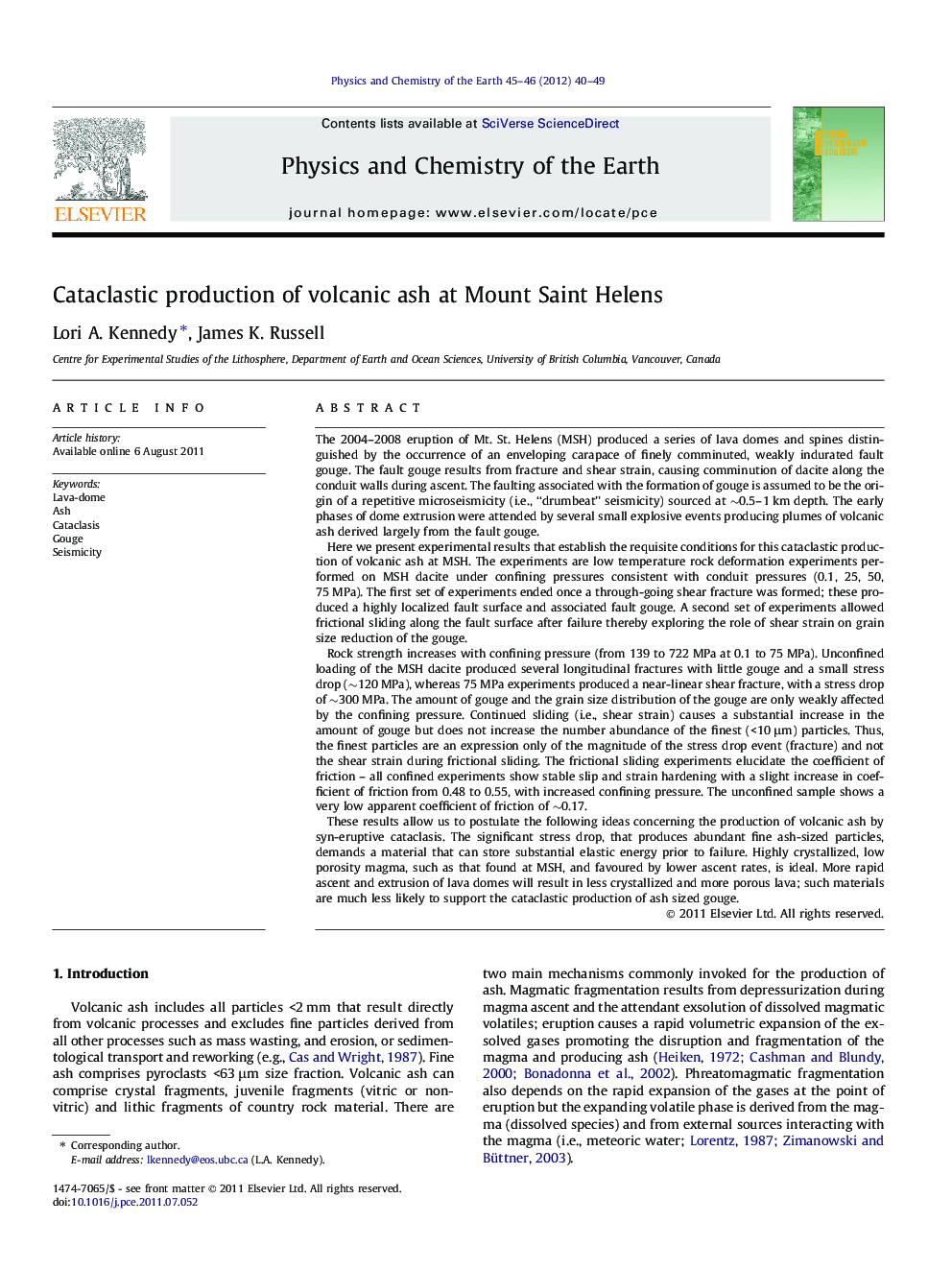| کد مقاله | کد نشریه | سال انتشار | مقاله انگلیسی | نسخه تمام متن |
|---|---|---|---|---|
| 4721142 | 1639368 | 2012 | 10 صفحه PDF | دانلود رایگان |

The 2004–2008 eruption of Mt. St. Helens (MSH) produced a series of lava domes and spines distinguished by the occurrence of an enveloping carapace of finely comminuted, weakly indurated fault gouge. The fault gouge results from fracture and shear strain, causing comminution of dacite along the conduit walls during ascent. The faulting associated with the formation of gouge is assumed to be the origin of a repetitive microseismicity (i.e., “drumbeat” seismicity) sourced at ∼0.5–1 km depth. The early phases of dome extrusion were attended by several small explosive events producing plumes of volcanic ash derived largely from the fault gouge.Here we present experimental results that establish the requisite conditions for this cataclastic production of volcanic ash at MSH. The experiments are low temperature rock deformation experiments performed on MSH dacite under confining pressures consistent with conduit pressures (0.1, 25, 50, 75 MPa). The first set of experiments ended once a through-going shear fracture was formed; these produced a highly localized fault surface and associated fault gouge. A second set of experiments allowed frictional sliding along the fault surface after failure thereby exploring the role of shear strain on grain size reduction of the gouge.Rock strength increases with confining pressure (from 139 to 722 MPa at 0.1 to 75 MPa). Unconfined loading of the MSH dacite produced several longitudinal fractures with little gouge and a small stress drop (∼120 MPa), whereas 75 MPa experiments produced a near-linear shear fracture, with a stress drop of ∼300 MPa. The amount of gouge and the grain size distribution of the gouge are only weakly affected by the confining pressure. Continued sliding (i.e., shear strain) causes a substantial increase in the amount of gouge but does not increase the number abundance of the finest (<10 μm) particles. Thus, the finest particles are an expression only of the magnitude of the stress drop event (fracture) and not the shear strain during frictional sliding. The frictional sliding experiments elucidate the coefficient of friction – all confined experiments show stable slip and strain hardening with a slight increase in coefficient of friction from 0.48 to 0.55, with increased confining pressure. The unconfined sample shows a very low apparent coefficient of friction of ∼0.17.These results allow us to postulate the following ideas concerning the production of volcanic ash by syn-eruptive cataclasis. The significant stress drop, that produces abundant fine ash-sized particles, demands a material that can store substantial elastic energy prior to failure. Highly crystallized, low porosity magma, such as that found at MSH, and favoured by lower ascent rates, is ideal. More rapid ascent and extrusion of lava domes will result in less crystallized and more porous lava; such materials are much less likely to support the cataclastic production of ash sized gouge.
► The 2004–2008 eruption of Mt. St. Helens (MSH) produced lava domes with a carapace of fault gouge.
► Low-temperature triaxial rock deformation experiments reproduced natural gouge material.
► Fine grained gouge produced by stress drops associated with fracturing.
► Ash at MSH is dispersed gouge, not fragmented magma.
Journal: Physics and Chemistry of the Earth, Parts A/B/C - Volumes 45–46, 2012, Pages 40–49